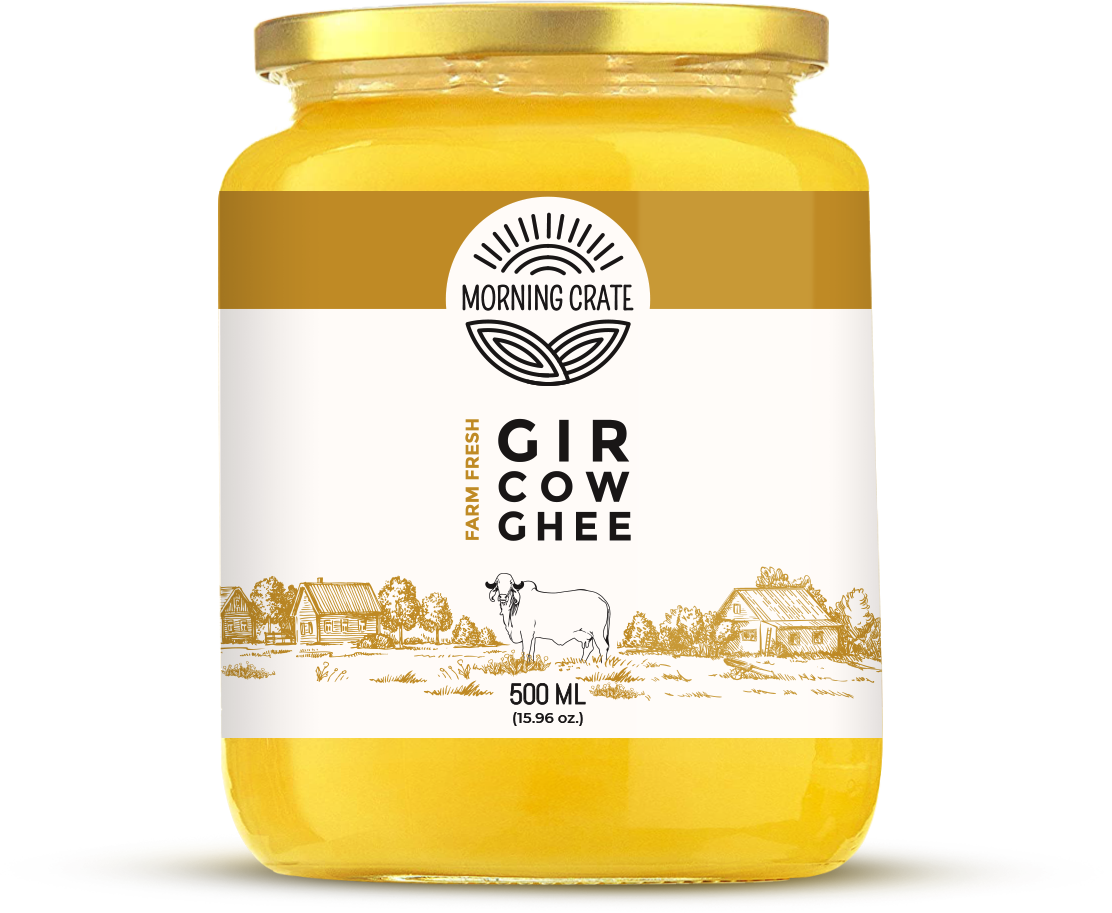India’s dairy heritage is a profound aspect of its rich cultural tapestry. Ghee, a revered dairy product, holds a special place in Indian cuisine and traditions. Among the various types of ghee, Gir ghee has emerged as a sought-after variety due to its unique qualities and health benefits. This article delves into the heritage of Gir ghee, its benefits, and offers a comprehensive guide to understanding and evaluating cow ghee prices.
The Legacy of Gir Ghee
Gir ghee is derived from the milk of Gir cows, a native breed from the Gir forest region in Gujarat. These cows are known for their superior quality milk, which is rich in A2 beta-casein protein, making it more nutritious and easier to digest compared to the A1 protein found in the milk of many other cow breeds. The traditional methods of preparing Gir ghee further enhance its nutritional profile and distinct flavor.
The Traditional Preparation Method
Gir ghee is often made using the Vedic bilona method, which involves churning curd to separate the butter and then simmering it to obtain pure ghee. This slow-cooking process not only retains the essential nutrients but also imparts a rich, nutty flavor and a grainy texture to the ghee. The artisanal approach to making Gir ghee ensures that it remains free from additives and preservatives, offering an authentic and wholesome product.
Health Benefits of Gir Ghee
Gir ghee is celebrated for its numerous health benefits, which include:
- Enhanced Digestion: The presence of butyric acid in Gir ghee aids in improving gut health and digestion.
- Rich in Nutrients: It is a good source of fat-soluble vitamins like A, D, E, and K, which are essential for various bodily functions.
- Boosts Immunity: The antioxidants in Gir ghee help in strengthening the immune system.
- Promotes Heart Health: The healthy fats in Gir ghee support cardiovascular health by reducing bad cholesterol levels.
Understanding Cow Ghee Prices
When it comes to purchasing cow ghee, prices can vary significantly based on several factors. Understanding these factors can help consumers make informed decisions and ensure they get value for their money.
Factors Influencing Cow Ghee Prices
- Quality of Milk: The quality of milk used to make ghee is one of the primary determinants of its price. Milk from indigenous breeds like Gir cows, which is rich in A2 protein, commands a higher price due to its superior nutritional profile.
- Production Method: Traditional methods such as the bilona process are labor-intensive and time-consuming, resulting in higher costs compared to industrial methods. However, the quality and taste of bilona ghee are unparalleled.
- Purity and Additives: Pure cow ghee without any additives or preservatives is generally more expensive. Products that contain added flavors or are diluted with other fats are often cheaper but lack the same health benefits.
- Brand and Certification: Reputable brands with certifications like FSSAI, organic, or grass-fed labels often have higher prices due to their quality assurance and compliance with safety standards.
Evaluating the Best Cow Ghee Price
To evaluate the best cow ghee price, consider the following steps:
- Read Labels Carefully: Check the ingredient list for any additives. Pure cow ghee should only list milk fat as its ingredient.
- Compare Brands: Look at different brands and compare their prices and reviews. Reputable brands might be pricier but often provide better quality.
- Check for Certifications: Certifications can be a good indicator of quality. Look for organic, grass-fed, or other relevant certifications.
- Consider Packaging: Good quality ghee is usually packaged in airtight containers to preserve its freshness. Opt for brands that provide adequate packaging information.
- Buy in Bulk: If you use ghee regularly, buying in larger quantities can often be more economical. Look for deals or bulk pricing options.
The Price Spectrum: What to Expect
In the market, cow ghee prices can range from relatively affordable to premium. Here’s a general breakdown:
- Economy Range (INR 300 – INR 500 per kg): This range includes commercially produced ghee, often made using industrial methods. While it might be more affordable, the quality can vary.
- Mid-Range (INR 500 – INR 1000 per kg): This includes ghee from reputable brands that ensure a decent quality product. These might use a combination of traditional and modern methods.
- Premium Range (INR 1000 – INR 2000+ per kg): This range typically includes Gir ghee and other artisanal ghee products made using traditional methods. The higher price reflects the quality of milk, production process, and nutritional value.
Where to Buy Gir Ghee
Gir ghee can be found in various retail outlets, specialty stores, and online platforms. Here are some reliable sources:
- Organic and Specialty Stores: Stores like Fabindia and Organic World stock high-quality Gir ghee.
- Local Markets: Certain local markets and health food stores in metropolitan areas might also carry Gir ghee.
- Online Platforms: Websites like Amazon, BigBasket, and specific organic product websites offer a wide range of Gir ghee options. Buying online also allows you to read customer reviews and compare prices.
Conclusion
Embracing India’s dairy heritage through products like Gir ghee not only supports traditional practices but also provides numerous health benefits. Understanding the factors that influence cow ghee prices helps consumers make informed choices, ensuring they get the best value for their money. Whether you’re looking to incorporate Gir ghee into your diet for its rich flavor and health benefits or simply want to ensure you’re getting high-quality cow ghee at a fair price, this guide serves as a comprehensive resource. So, next time you’re on the lookout for ghee, remember the heritage and quality that Gir ghee brings to the table and make your ghee buy a delightful experience.
